Pros and cons: choosing a heating radiator. Aluminum or bimetallic – which is more reliable and will last longer?
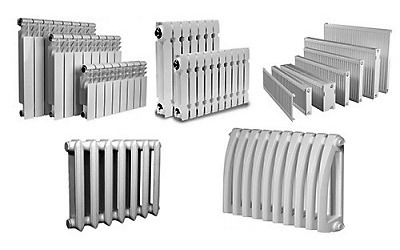
Gone are the days when every apartment had cast iron batteries. Lightweight, reliable ones are coming to replace high heat output radiators.
Comparison of characteristics popular modern radiators - aluminum and bimetallic, - will help to draw a conclusion, which are better to use with central heating, and which will show themselves effectively in the space of a private house.
Content
In what cases should you choose heating radiators?
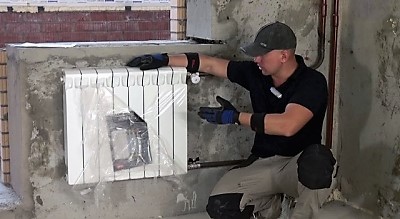
The following people face the need to replace radiators:
- during cosmetic repairs;
- when purchasing new apartment;
- when connecting the heating in private house or cottage.
It is necessary to understand: the method of heating an apartment building and a cottage differ in some features.
Differences between bimetallic and other radiators
They received this name due to their design: outer layer of aluminum hides the inner steel core. The idea is to achieve high heat transfer from the "soft" aluminum, while preventing contact with water from the pipes, which leads to corrosion. Steel core guarantees a long service life radiator, protecting against pressure surges and water hammer.
Bimetallic radiators meet:
- full bimetallic;
- incompletely bimetallic.
Complete absence of contact with water typical for full bimetallic models. Their service life is longer, but their cost is also significantly higher.
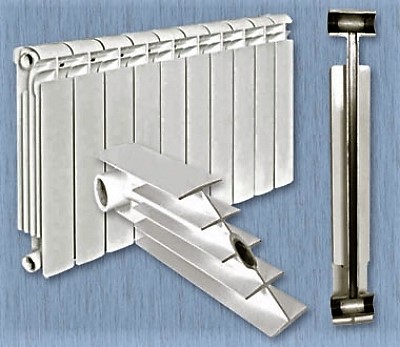
In the second type made of steel completed only vertical water supply channel. The main task that such a design solves is regulating excess pressure in pipes, which eliminates the risk of breakage.
They are presented on the Russian market in a wide range.
Sometimes the role of the inner core is performed by copperThis metal is more expensive than steel. It can withstand significant pressure. up to 40 atm. (at working standard up to 20), but is rarely used in private residential premises. In central heating hydraulic shocks do not exceed 15-20 atm., so the cost of a copper core is not always justified.
Aluminum: what are they and how do they differ?
Aluminum radiators popular due to their low cost And excellent heat transferThe technical characteristics depend on the manufacturing method.
Die casting
Cast radiators are made from more durable aluminum rather than pure aluminum. alloy - silumin (aluminum + silicon)Such batteries can withstand up to 16 atmospheres. They have wide water channels that prevent pipes from clogging, and therefore do not require additional rinsing.
What to look for: on the quality of the alloyAs a rule, European manufacturers use durable alloy, thereby reducing the risk of corrosion and improving heat transfer.
Extrusion or squeezing
Supposed production of sections radiator separately, after which they are welded to the cast manifolds.
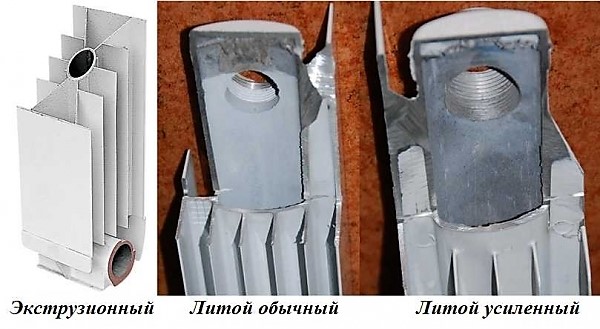
Photo 1. Comparison of the design of different types of aluminum radiators: two cast and one extruded.
What to look for: individual battery parts must be connected among themselves exactly by welding or pressingIn cheap models, sections are connected with composite glue, which slightly increases the risk of leakage.
Anodic oxidation
There is a meaning behind this name chemical process, which protects aluminum from corrosion and pressure drops. They cost more expensive and rarely used in everyday life.
Radiator Characteristics. How to Compare and Choose the Best
To choose the right radiator for an apartment, office or private home, you need to compare the advantages and disadvantages of a number of characteristics.
Important! Some radiators made in China, despite the declared characteristics, in laboratory conditions they show discrepancies in results - up to 35%. Be careful when choosing a manufacturer.
Heat transfer level
For comfortable heating 1 sq. m. apartment with ceiling height 2.7 m heat dissipation required 100 W. Each section aluminum the radiator can provide up to 212 W, A bimetallic - maximum 185 W.
Water hammer and high pressure
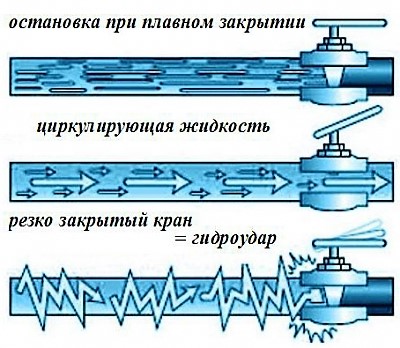
Water hammer is a pressure surge in a pipe that occurs:
- at the moment failure of the circulation pump at the station;
- due to the presence air zones in the pipeline;
- at abrupt closing of the tap, shut-off valves.
Water hammer lasts a fraction of a second - but this time is enough to cause the radiator to break down. Aluminum — is not the most reliable metal for houses with central heating and can withstand up to 16 atm., while bimetallic models with a steel core easily take on 20 atm, and some - all 40 atm.
Maximum coolant temperature
For aluminum radiators - it's 110 degrees. It is interesting that aluminum reacts to temperature changes quickly and holds a large volume - up to 0.46 l. This is a plus. Bimetallic accommodates only 0.18 l of water, but they can withstand higher temperatures - up to 130 degrees.
Reliability and durability
Aluminum is subject to corrosion, since it is not protected from contact with water. Good aluminum models use high-quality alloys that guarantee durability. But this durability is still inferior to bimetal, because steel is not subject to corrosion at all.
Easy to install
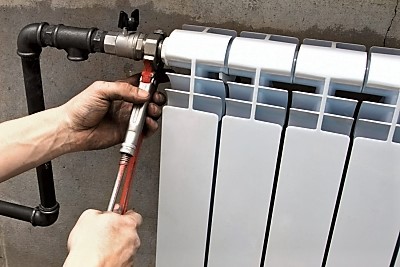
Bimetallic radiators are recommended rinse more often, because the diameter of the steel pipe inside is small, blockages may occur.
In general, their easier to install, because there is less risk of deformation. Both bimetallic and aluminum models are easily attached with a set of keys and shaped elements, without powerful brackets.
Price
This criterion is the most important for many. Bimetallic radiators more expensive, sometimes the difference in cost reaches up to 30%.
Useful video
A video that talks about aluminum and bimetallic radiators: external and internal differences, pros and cons.
Which radiator to choose: aluminum or bimetallic
Based on the totality of characteristics, we can say that bimetallic radiators are more suitable for use in houses with central heating. A to cottages better watch aluminum sections.
Important! A private house is, as a rule, large area, for heating which will be useful powerful radiators with high heat transfer rate for one section. Exactly aluminum will be able to provide such heat output, with obvious cost savings.
If you choose quality model and comply with operating standards, then with a local heating system without overloads (which are found in apartment buildings), an aluminum radiator will serve you for a long time. Fast heating and fast cooling of sections is an excellent option for cottages where people do not live permanently.
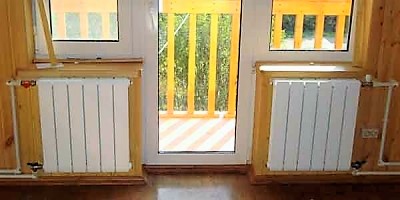
Remember that high thermal power has a downside. Warm air currents rise quickly and create a temperature differenceTo prevent the floor from being cold, you need to make calculations precisely based on the area of the room.
And here it is to an apartment with central heating bimetallic radiators are a good choice. Yes, they are a bit more expensive than aluminum ones, but they can protect against pressure drops in pipes and will provide uniform heating.









Comments
By the way, the heat output of such batteries is somewhat higher than that of conventional aluminum ones.